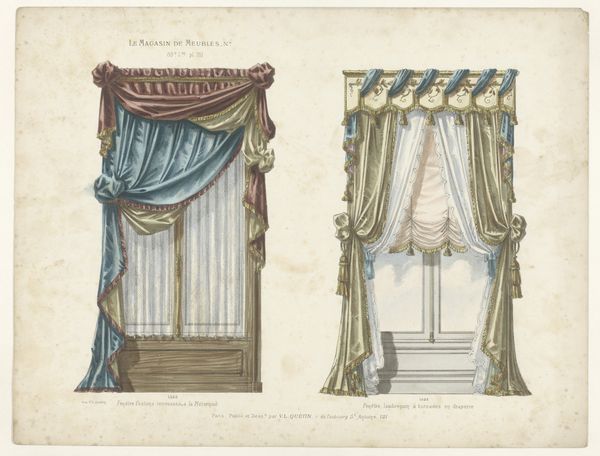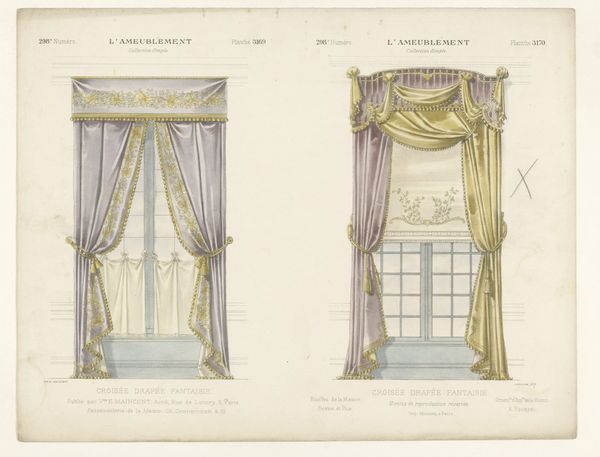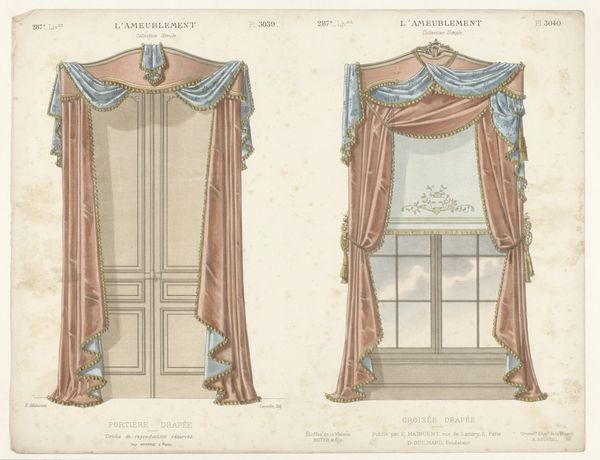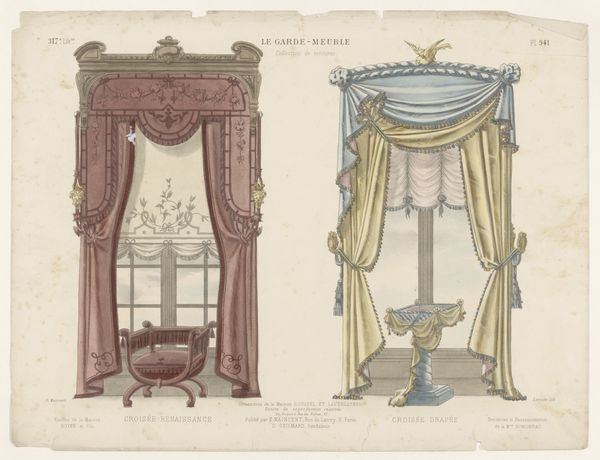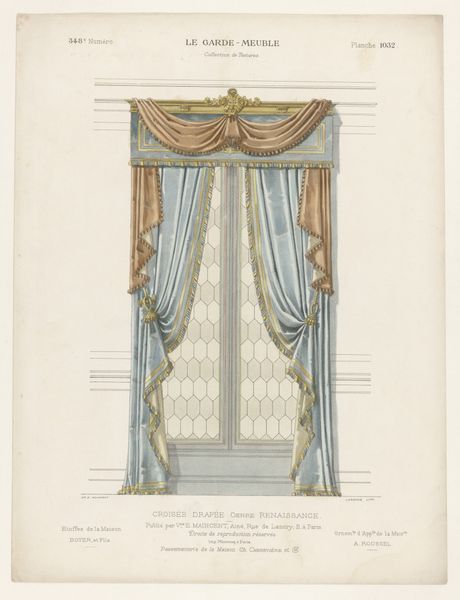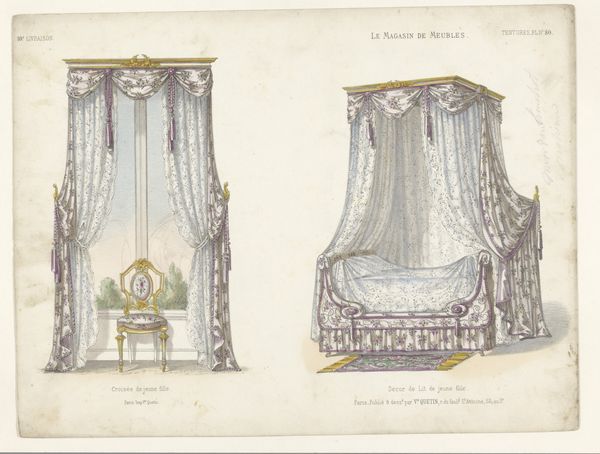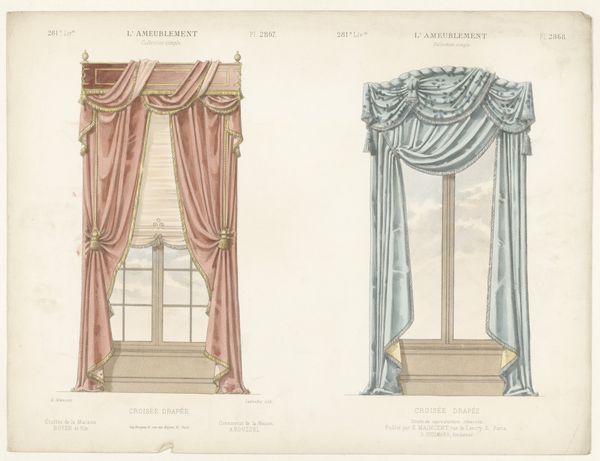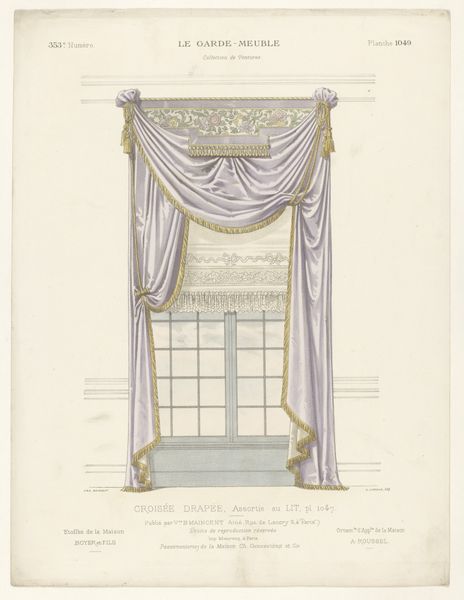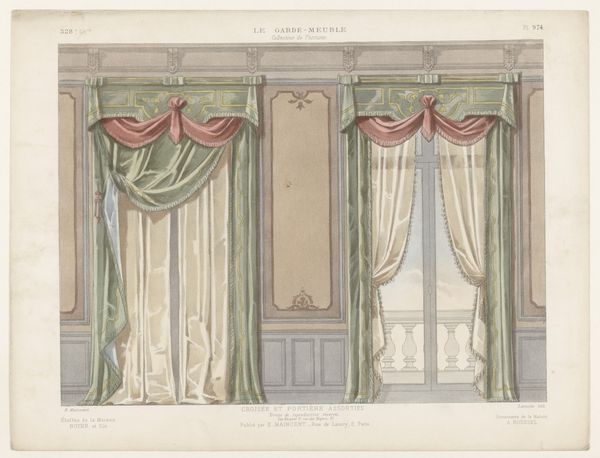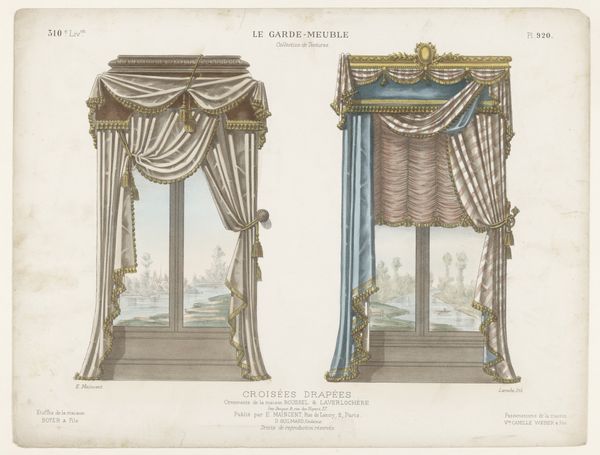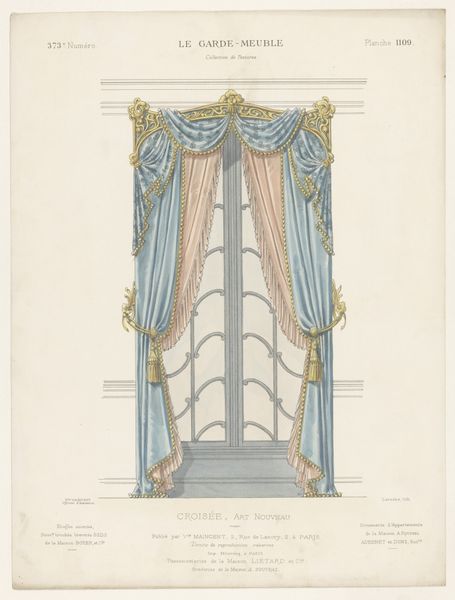
print, watercolor, architecture
# print
#
watercolor
#
decorative-art
#
watercolor
#
architecture
Dimensions: height 275 mm, width 359 mm
Copyright: Rijks Museum: Open Domain
Curator: Let's discuss this interesting piece, "Twee vensters met gordijnen," or "Two Windows with Curtains," created sometime after 1878 by an anonymous artist. It's rendered with watercolor and printmaking techniques. Editor: Immediately, I'm struck by the opulence. The draped fabrics, the intricate trim, the suggestion of luxury. These aren’t just functional window coverings; they're making a statement about taste and social class. Curator: Exactly! What's fascinating to me is how this work reflects the intersection of art, industry, and domestic life. Consider the labor involved in producing these textiles – from weaving the fabric to creating the elaborate embellishments. This print is essentially a pattern, a commercial design for reproduction and consumption. Editor: And the placement in "Le Magasin de Meubles," the furniture store… it elevates the role of curtains in creating the atmosphere of a modern bourgeois home, becoming an essential item of interior décor for anyone who sought after refined, contemporary spaces. Curator: I think there’s a deliberate blurring of boundaries here, between "high art" watercolor and the functional craft of curtain design. Both have their value and work hand-in-hand, don’t you think? And don't you find the details amazing? The fringe, the way the light catches on the folds... even as a print, it conveys texture. Editor: I see how those two very elaborate designs provide insight into social aspiration and gender dynamics of the era. Curtains were not merely decoration; they were statements. But also devices used to negotiate public and private spheres, to perform wealth and also shelter away from unwanted eyes. Curator: Precisely! And even without a known artist, the piece has much to say about the cultural production of its time. Editor: So, while the creator may be anonymous, the work certainly speaks volumes. The level of detailed craftsmanship presented reveals broader patterns of industry and aspiration, that reflect historical nuances in the 19th century, still visible today.
Comments
No comments
Be the first to comment and join the conversation on the ultimate creative platform.
